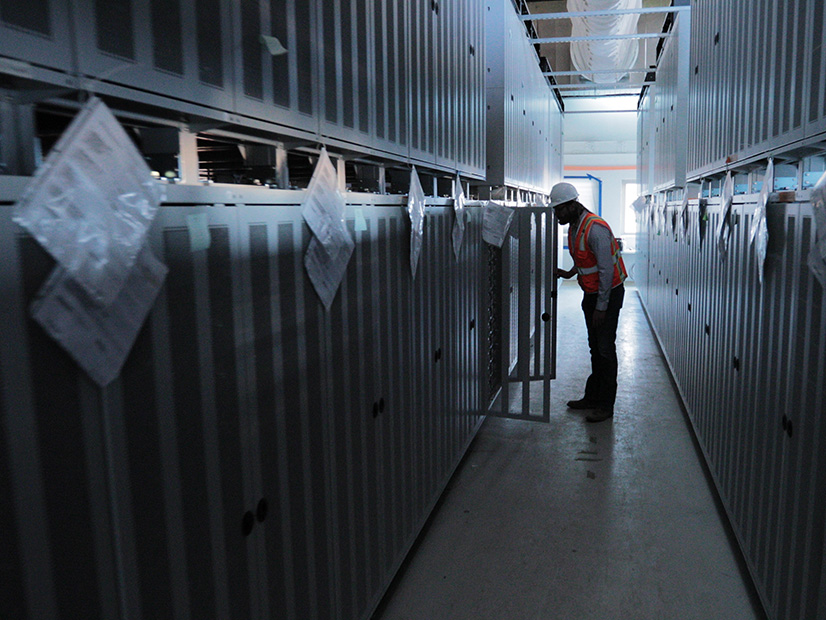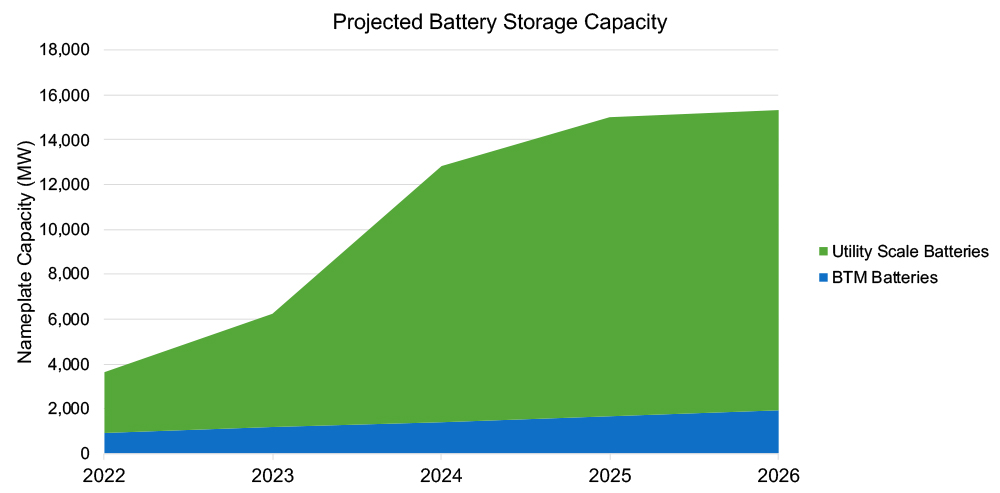
The California Energy Commission adopted a midterm reliability analysis Thursday that determined the state can meet its 2023-2026 capacity needs without adding more gas generation but warned that extreme weather and the state’s dependence on battery storage could prove problematic.
“The analysis concludes that, given the assumptions, it appears that sufficient capacity has been ordered for midterm reliability from 2023 through 2026,” Liz Gill, advisor to CEC Vice Chair Siva Gunda, told commissioners. “However, additional retirements [of aging natural gas plants] would increase the likelihood of system reliability challenges.”
The analysis did not “capture the frequency and dispersion of extreme climate events” or the higher demand from electrification of the transportation and building sectors, Gill said. The CEC is working to include those factors in future analyses, she said.
The second conclusion of the analysis was that “a portfolio of zero-emitting resources can provide the equivalent system reliability compared to fossil fuel resources,” but lithium-ion battery performance must be monitored as storage plays a larger role, she said.
The vote on the midterm reliability analysis followed two CEC workshops on Aug. 30 that examined the role of natural gas in the energy mix through 2026 as the state’s last nuclear plant retires, older gas plants close, and the grid relies more heavily on renewables and storage. (See CEC Looks at Gas for Midterm Reliability.)
The CEC’s demand forecasts inform procurement decisions by the California Public Utilities Commission.
In June, the CPUC ordered utilities to procure an additional 11.5 GW of capacity by mid-decade but intentionally left open the question of whether more gas generation is needed. (See CPUC Orders Additional 11.5 GW but No Gas.)
A proposed decision by a CPUC administrative law judge said the state needed up to 1,500 MW in additional gas capacity, but CPUC commissioners rejected that component amid a public outcry. (See CPUC Proposes Adding 11.5 GW of New Resources.)
“The revised [proposed decision] that we’re voting on today removes the requirement to procure any fossil resources, and instead our staff will work with the Energy Commission staff to conduct additional analysis over the next few months about the need for fossil resources for reliability purposes,” CPUC Commissioner Clifford Rechtschaffen said at the time. “The results of this analysis from our staff and the Energy Commission will help inform our next procurement decision, which we will debate about later this year.”
Thursday’s analysis found the CPUC’s 11.5 GW no-gas procurement order was sufficient to ensure reliability through 2026. Under the order, the state is expected to add 10 GW of four-hour battery storage, 8.3 GW of solar capacity, 2.5 GW of wind, 1.2 GW of geothermal power and 1 GW of long-duration storage.
Concerns have been raised that the international supply chain for battery production might not support the projected growth, Gill said. The analysis applied a one-year delay to 20% of new battery resources and found that it did not undermine reliability, she said.
Battery Performance
The analysis also raised the issue of battery performance, including charging and outages.
Battery outage rates need more analysis as the technology is deployed, Gill said.
A Sept. 4 outage at Vistra Energy’s Moss Landing Energy Storage Facility, the world’s largest battery array at 400 MW, pointed to one potential flaw in lithium-ion batteries: overheating. Initially the incident was blamed on high heat and fire, but Vistra said in a Sept. 30 statement that it has so far found no evidence of batteries exceeding acceptable temperature limits when its sprinklers went off, damaging a small percentage of units.

Limitations on imports, solar and hydropower could affect charging conditions, Gill said.
The analysis looked at scenarios in which imports were limited by up to 5,600 MW, hydropower was limited to average minimum generation during non-peak hours, and solar was reduced by 15% to 45% to reflect cloudy or smoky conditions.
The CEC analysts found there was sufficient capacity on the grid until both imports and hydropower were constrained and solar output dropped by 45%.
“Given the extreme nature of this scenario, staff has determined that it does not appear energy sufficiency will be a limiting factor to system reliability in the next five years,” Gill said.

